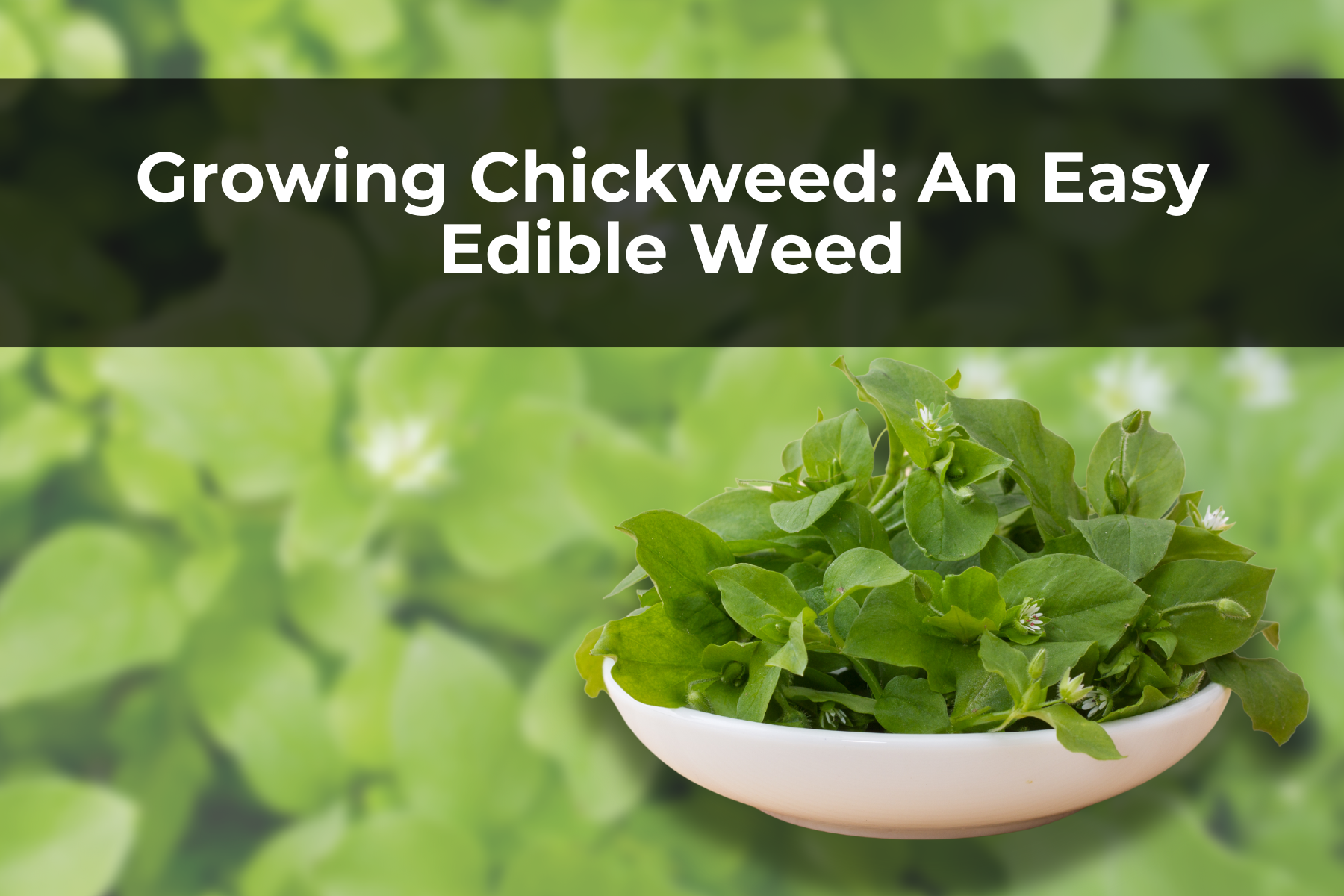Last Updated on April 15, 2024 by Real Men Sow
Growing chickweed can be almost anywhere and it is easy to plant. They can grow naturally, but it is sometimes considered undesirable plant. It is high in nutrients and can be eaten raw or as spinach. This plant is definitely worth growing. Chickweed is becoming a popular edible plant that’s both tasty and nutritious for health-conscious people.
Planting Your Chickweed
You’ve probably seen this plant in your garden, in your backyard, or out in the wild. This plant is self-seeding and low-growing. It produces lush green leaves. Chickweed can be grown in a controlled manner by treating it like any other herb. The tiny seeds can be planted in containers or in the ground in late spring or early summer. Or, they can be grown year-round in pots indoors. Chickweed likes moist, rich soil but can grow in soil that isn’t as well. The soil should be cleared of any weeds, rocks, and other debris. Next, add compost to the area. This will significantly improve the growth of chickweed.
- Make furrows one-half to two inches deep and four to six feet apart
- Let the seeds soak in water for at least 30 minutes. Drain it.
- Do not plant more than 3 seeds per inch in the furrows
- Topsoil, lightly water, and cover
Propagating Chickweed
Chickweed usually drops many seeds before it dies in winter. Usually, they do so by the beginning of fall. Stellaria media is considered a weed by many. This means that you won’t likely find seedlings at your local nursery. Online seed retailers are a good option if you don’t have access to or the means to obtain seeds from a plant. You can propagate chickweed plants by rooting nodes (the bumpy protrusions at the stem). The best cutting length is between four and six inches.
Thriving Conditions for Chickweed
Soil
Chickweed prefers soils rich in nitrogen. You can find it in light, medium, and heavy soils, such as sandy, loamy, or clay. It is not a fan of acidic soils and prefers neutral pH levels. The seedlings will not germinate from soil depths greater than one inch.
Light
Chickweed can grow in partial shade or full sun, but it requires a large area that allows for plenty of space to spread. It is often planted in areas that aren’t suitable for other plants. It behaves as ground cover so some people choose to plant it under taller plants or bushes. However, chickweed seeds need sunlight to get out of the soil. The plant can tolerate temperatures as low at -15 degrees and is therefore hardy from zones 2 to 11.
Watering
It likes moist soil so don’t let the chickweed area dry completely. This plant does not like to be left in excess moisture. The soil type, climate, season, and how much sunlight your plant gets each day will all affect the watering schedule. Many gardeners believe that chickweed is a barometer of nature. The leaves will fold when it rains.
Pests
Chickweed is a host plant for certain garden pests such as thrips or Lygus bugs that can infect other plants. Thrips, which are winged, slender insects, puncture plants and then take their contents. They can also transmit viruses such as tomato spotted virus. Lygus bugs can be found in green, brown and yellow spots on fruit and cotton crops.
Diseases Encountered when Growing Chickweed
Chickweed isn’t susceptible to any diseases but is a reservoir host of tomato spotted virus (SWF), and cucumber mosaic virus. Chickweed is a host for these viruses and does not suffer any negative effects, but it can be a source of infection for other plants. Both CMV and TSWF can cause severe losses in ornamental and vegetable plants.
General Care for Growing Chickweed
Chickweed can be grown from seeds. It will likely appear in your yard, even if it isn’t planted intentionally. It is common to see chickweed in areas with poor fertility, such as those that have been heavily tilled. This is usually a sign of a low level of calcium, phosphorus, or too much potassium and sodium in the soil. These minerals should be balanced by a fertilizer. It requires very little care. You can harvest it by slicing off several inches of stem, leaves, and flowers.
- Fertilizing: Chickweed plants don’t require additional fertilization. You can till the soil and include organic material to help your plants grow.
- Mulching: Mulching is a way to retain moisture in the soil, and it can also prevent most weeds from coming into your garden.
- Overcrowding: Chickweed plants won’t thrive if they are thinned. When the chickweed seedlings reach 3 inches in height, trim them. For better growth, keep at least 5 in between two plants.

